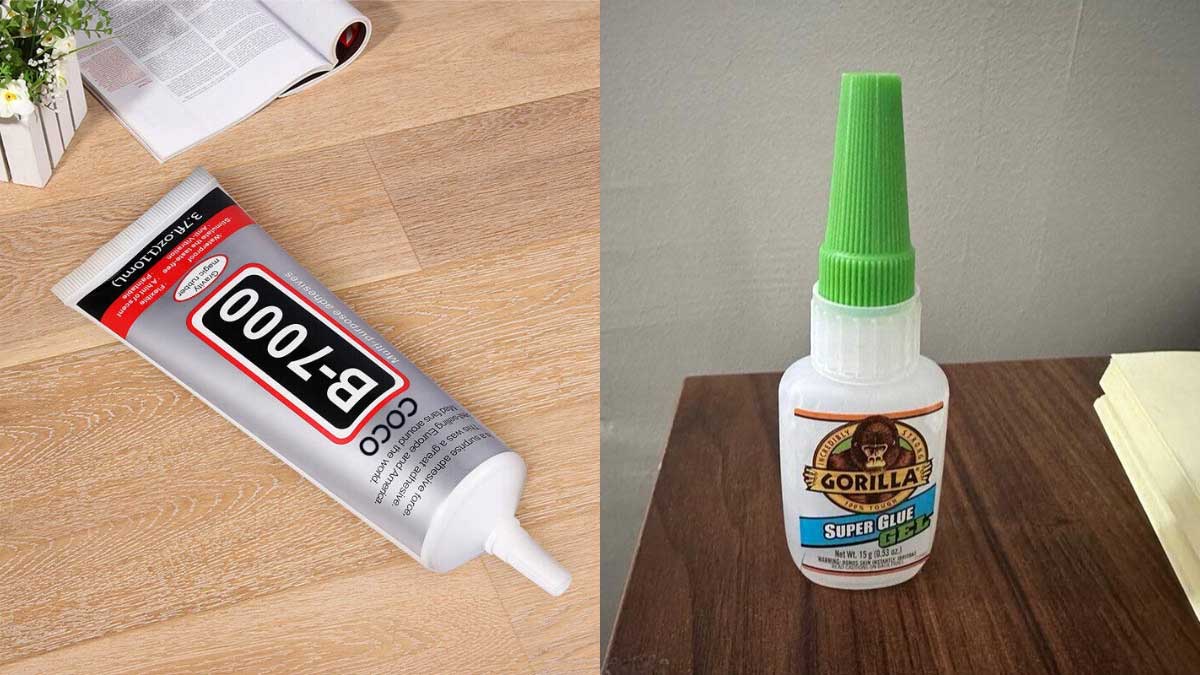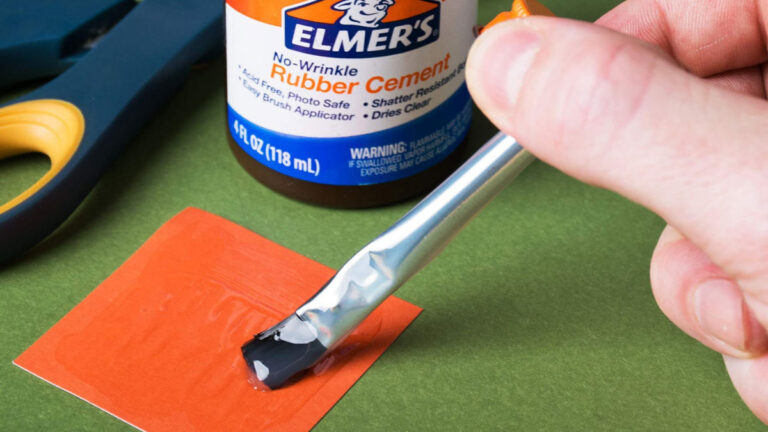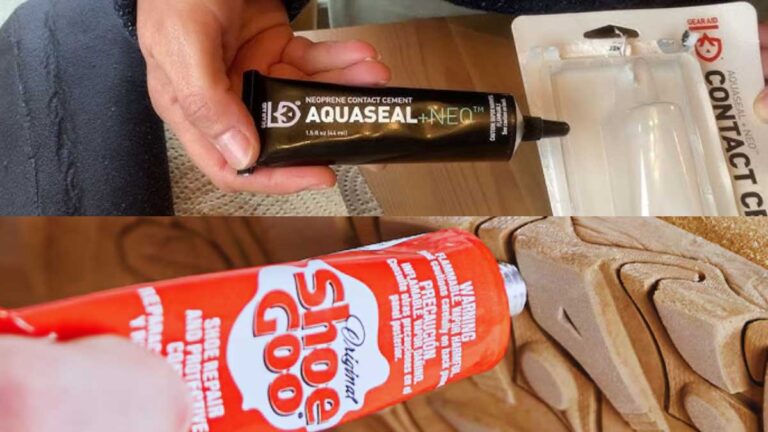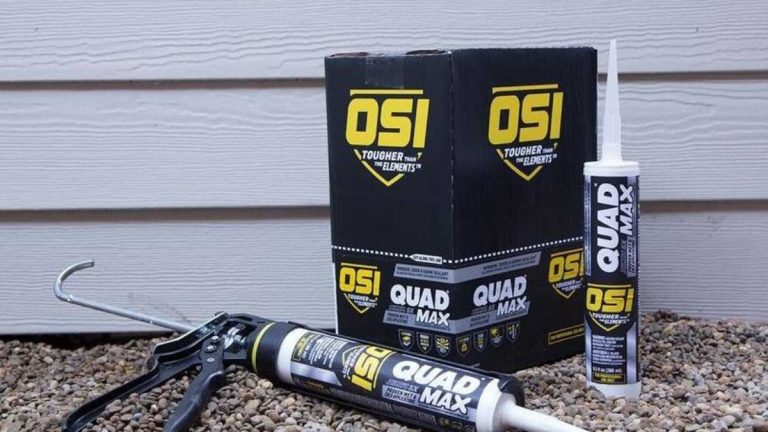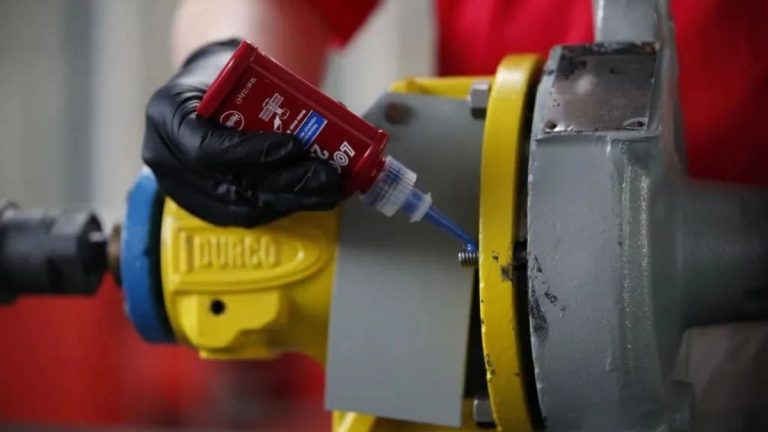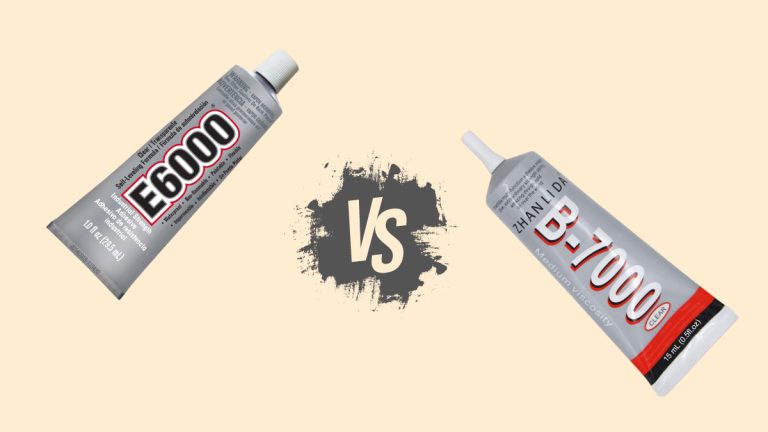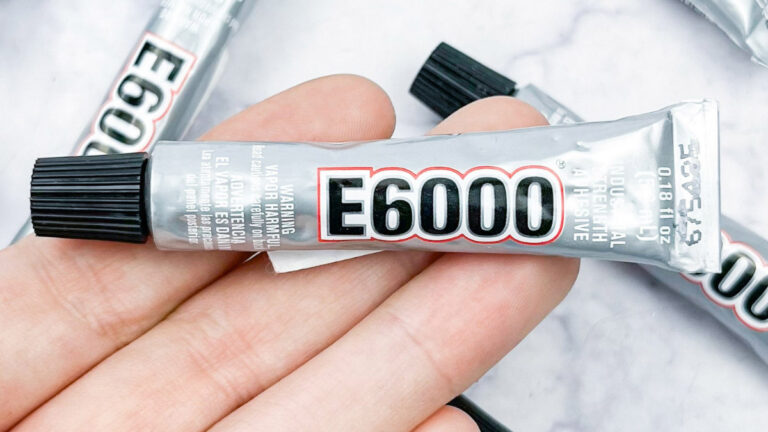B7000 vs Super Glue: Which Adhesive is Best for Your DIY Projects?
When it comes to tackling your DIY projects or making quick repairs, choosing the right adhesive can make all the difference. Two popular options you might consider are B7000 and super glue. While both promise strong bonds, they cater to different needs and materials.
Understanding the key differences between B7000 and super glue can help you make an well-informed choice for your next project. Whether you’re fixing a broken gadget or working on a craft, knowing which adhesive to use could save you time and frustration. Let’s jump into what sets these two adhesives apart and which one might be the best fit for your needs.
Key Takeaways
- B7000 Glue’s Versatility: B7000 is ideal for electronics, crafts, and items that require flexibility and durability. It offers a waterproof and vibration-resistant bond, making it suitable for materials like glass, metal, fabric, and plastic.
- Super Glue’s Quick Bonding: Super glue, also known as cyanoacrylate adhesive, sets almost instantly. It’s perfect for quick repairs and precise tasks on non-flexible parts like ceramics, plastic, and metal.
- Drying and Curing Times: B7000 requires 3-6 minutes for surface drying and up to 72 hours to fully cure, providing ample working time. Super glue, on the other hand, dries within seconds and reaches full strength in 24 hours.
- Flexibility vs. Brittleness: B7000 remains flexible after curing, making it suitable for applications subject to movement. In contrast, super glue becomes brittle and is better suited for stationary items.
- Safety Precautions: Both adhesives require careful handling. B7000 should be used in well-ventilated areas due to its strong odor, while super glue’s quick-setting nature necessitates the use of gloves to avoid skin bonding.
- Material Compatibility: Choose B7000 for projects involving varied materials like electronics, fabric, and glass. Opt for super glue for quick fixes on non-porous materials such as metal and ceramic.
Overview of B7000 and Super Glue
B7000 Glue
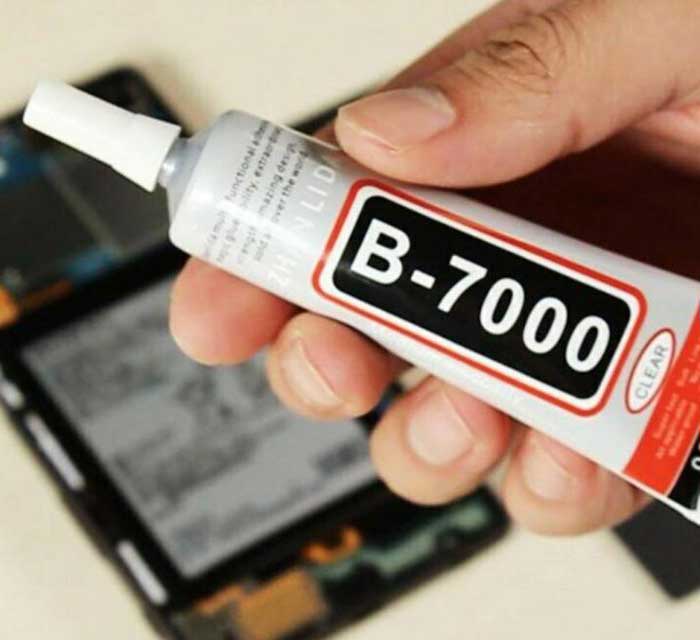
Type and Properties:
- Multi-Purpose Adhesive: B7000 is an industrial-grade adhesive with versatility and flexibility.
- Consistency: Clear and semi-fluid with a somewhat viscous nature.
- Key Properties: Waterproof, strong bond strength, and flexibility when dry. It can withstand some movement without breaking.
Common Uses:
- Industry Application: Frequently used in smartphone and electronics repair.
- Crafts and DIY Projects: Ideal for jewelry making, crafts, and various materials like glass, metal, fabric, plastic, and wood.
- Vibration Resistance: Suitable for items that are handled frequently as it withstands vibrations well.
Application and Curing Time:
- Surface Drying Time: Requires 3-6 minutes for surface drying.
- Full Cure Time: Takes between 24-72 hours to cure completely.
- Safety Precautions: Apply in well-ventilated areas due to its strong odor, and avoid direct contact with skin or eyes.
Super Glue
Type and Properties:
- Instant Adhesive: Super glue, also known as cyanoacrylate adhesive, is a rapid-bonding glue.
- Consistency: Clear and runny, allowing it to spread easily across surfaces.
- Key Properties: Provides a very strong bond that sets quickly, typically within seconds. But, it lacks flexibility and is brittle when dry.
Common Uses:
- General Repairs: Widely used for quick fixes around the house like mending broken ceramics or plastic items.
- Precision Bonding: Often used in model building and other applications requiring precise bonding of small parts.
- Permanent Fixes: Ideal for items that will remain stationary and are not subjected to movement or vibration.
Application and Curing Time:
- Instant Setting: Bonds within seconds to a minute.
- Full Strength Time: Usually reaches full strength within 24 hours.
- Safety Precautions: Work in a well-ventilated area and use gloves to avoid skin bonding. Store carefully to prevent accidental spills.
Comparison Table
| Property | B7000 Glue | Super Glue |
|---|---|---|
| Bond Strength | Strong, flexible | Extremely strong, brittle when dry |
| Drying Time | 3-6 minutes (surface), 24-72 hrs (full) | Sets in seconds, full strength in 24 hrs |
| Flexibility | Retains flexibility | No flexibility, becomes brittle |
| Waterproof | Yes | Yes |
| Common Uses | Electronics, crafts, jewelry repair | General household repairs, precision tasks |
| Vibration Resistance | High | Low |
| Consistency | Clear, semi-fluid, viscous | Clear, runny |
Summary
B7000 and super glue serve different purposes even though both providing strong bonds. B7000’s flexibility and longer curing time make it suitable for items subject to movement, while super glue’s rapid bonding suits quick, stationary repairs. Use B7000 for electronics and crafts, and opt for super glue for household and precision tasks.
Properties and Applications
Understanding the properties and applications of B7000 and super glue helps you choose the right adhesive for your needs. Each has unique characteristics that dictate their best uses.
Physical Characteristics
B7000 Glue:
- Appearance: Semi-transparent, floating body
- Consistency: Thinner, easier to work with
- Surface Drying Time: 3-6 minutes
- Complete Curing Time: 24-48 hours
- Elasticity: Stretches up to 900% of original length
Super Glue (Cyanoacrylate):
- Appearance: Clear, liquid
- Consistency: Thicker, more viscous
- Surface Drying Time: Almost instantaneous
- Complete Curing Time: Several hours
- Elasticity: Less elastic, can become brittle
Using the right adhesive based on these characteristics can improve the quality of your project.
Adhesion and Strength
B7000 Glue:
- Strong bond on various materials including both porous and non-porous substrates
- Remains flexible, good for materials that experience movement
Super Glue:
- Bonds almost instantly, suitable for quick repairs
- Can become brittle, not ideal for items subjected to stress or movement
Choosing the right adhesive for the material and use case can significantly impact the durability of the bond.
Material Compatibility
B7000 Glue:
- Ideal For:
- Electronics
- Crafts
- Glass
- Metal
- Fabric
- Flexible and waterproof, making it suitable for items that encounter movement and moisture
Super Glue:
- Best Suited For:
- Ceramic
- Plastic
- Rubber
- Metal
- Wood
- Quick Bond, making it perfect for fast repairs but not for materials requiring elasticity
Understanding material compatibility ensures the adhesive selected performs optimally.
Comparison Table
Here is a quick comparison of key properties:
| Property | B7000 | Super Glue |
|---|---|---|
| Appearance | Semi-transparent, floating body | Clear, liquid |
| Consistency | Thinner | Thicker, more viscous |
| Surface Drying Time | 3-6 minutes | Almost instantaneous |
| Complete Curing Time | 24-48 hours | Several hours |
| Elasticity | High, stretches up to 900% | Low, can become brittle |
| Ideal For | Electronics, crafts, glass | Ceramic, plastic, rubber |
Choosing an adhesive that aligns with your specific material and needs enhances project success.
Technical Specifics and Usage
When deciding between B7000 and Super Glue, understanding the technical specifics and proper usage can help ensure the success of your project. These adhesives cater to different needs based on their properties and handling requirements.
Curing and Drying Times
- B7000: This adhesive requires about 3-6 minutes for surface drying. You’ll find that it takes between 24 to 72 hours to fully cure, providing ample working time to adjust materials before the bond sets completely.
- Super Glue: Known for its quick setting properties, Super Glue typically dries within seconds. But, it can become brittle once dried, making it less suitable for applications needing flexibility.
Handling and Safety
- B7000: Comes with a precision applicator tip for controlled application. Ensure you’re working in a well-ventilated area due to the strong odor. Wear gloves if you have sensitive skin.
- Super Glue: It’s very fluid and dries exceptionally fast, so it’s crucial to control the application to prevent unwanted bonding. Always wear gloves to avoid skin contact, as it can bond skin instantly.
- B7000: Suitable for projects requiring flexibility and durability, like electronics and crafts. Ensure surfaces are clean and dry before applying to maximize adhesion.
- Super Glue: Ideal for quick fixes and precision tasks on non-flexible parts. Use sparingly to avoid excess which can weaken the bond.
| Property | B7000 | Super Glue |
|---|---|---|
| Adhesive Type | Industrial-grade, multi-purpose | Cyanoacrylate (instant adhesive) |
| Drying Time | 3-6 minutes (surface), 24-72 hours (full cure) | Seconds (instant) |
| Flexibility | High | Low |
| Waterproof | Yes | No |
| Consistency | Clear, semi-fluid | Very fluid |
| Applications | Plastics, metals, glass, fabrics | Plastics, metals, general household repairs |
| Safety Precautions | Work in ventilated area, wear gloves | Wear gloves, avoid skin contact |
This detailed comparison provides a clear understanding of the different attributes and appropriate applications of B7000 and Super Glue, aiding in selecting the right adhesive for your specific needs.
Performance Comparison
When comparing B7000 and super glue, it’s crucial to understand their strengths and weaknesses. While both adhesives provide strong bonds, they cater to different applications and material types.
Strength and Durability
B7000 Glue
- Offers high elasticity, stretching up to 900% without breaking, making it ideal for applications requiring flexibility.
- Forms a strong bond with metals, glass, ceramics, and fabrics, but requires 24-48 hours to fully cure.
- May have bonding issues with certain materials like fabrics over time.
Super Glue (Cyanoacrylate)
- Provides rapid bonding and high strength, but the bond is less flexible and can be brittle.
- Dries quickly, often within seconds to minutes, making it suitable for fast repairs.
- Less effective in applications where the bonded materials are subject to vibration or movement.
Versatility
B7000 Glue
- Suitable for multi-material bonding, including metals, glass, ceramics, and fabrics.
- Ideal for electronics, crafts, and projects requiring flexibility.
- Performs well across different conditions due to its elasticity and durability.
Super Glue (Cyanoacrylate)
- Best suited for precise tasks and general household repairs.
- Effective on small surfaces and quick fixes.
- Limited in versatility due to its brittle nature when dry.
Ease of Use
B7000 Glue
- Requires 3-6 minutes for surface drying, allowing repositioning before fully curing in 24-72 hours.
- Comes with precision applicator tips for accurate application.
- Safety measures: use in well-ventilated areas and wear gloves to avoid skin contact.
- Instantly bonds surfaces, drying within seconds.
- Very fluid, necessitating careful application to prevent unwanted bonding.
- Safety measures: wear gloves to prevent skin contact and use with care to avoid spills.
| Feature | B7000 Glue | Super Glue (Cyanoacrylate) |
|---|---|---|
| Drying Time | 3-6 minutes surface dry; 24-72 hours full cure | Seconds to minutes |
| Elasticity | Very high (stretches up to 900%) | Low |
| Bond Strength | Strong but takes time to cure | Instant but can be brittle |
| Versatility | High, suitable for multiple materials | Lower, best for quick fixes |
| Application | Requires precision applicator tip | Needs careful handling due to fluidity |
| Safety | Use in well-ventilated area with gloves | Wear gloves to avoid skin contact |
Pros and Cons
This section outlines the advantages and disadvantages of B7000 and super glue, aiding you in choosing the best adhesive for your projects.
Pros of B7000
- Flexibility: B7000 glue has high elasticity, allowing it to stretch without breaking. This property is beneficial for applications requiring flexibility, such as electronics or items that move frequently.
- Quick Drying: Even though being slower than some adhesives, B7000 dries relatively quickly, taking about 3-6 minutes for surface drying.
- Less Harsh Smell: Compared to strong adhesives like E6000, B7000 has a less harsh smell, making it more pleasant to work with.
- Single Component Epoxy: As a single component epoxy, B7000 is easier to apply and dispense compared to multi-component epoxies, simplifying your project management.
Cons of B7000
- Runnier Consistency: B7000 has a runnier consistency, which may make precise application more challenging, especially for small or detailed projects.
- Not Ideal for All Applications: While versatile, B7000 may not be the best choice for all materials or applications, such as those requiring extreme durability or specific adhesive properties.
Pros of Super Glue
- Instant Bonding: Super glue, or cyanoacrylate adhesive, sets almost instantly, usually within seconds, making it perfect for quick repairs and precise fixes.
- Ease of Use: This adhesive is straightforward to apply, requiring no mixing or special tools, which simplifies the application process.
- Strong Bond: Super glue creates a very strong bond on non-porous surfaces like metals and plastics, ensuring durable repairs.
- Brittleness: Once dry, super glue becomes brittle and may break under stress or movement, making it unsuitable for flexible applications.
- Limited Material Compatibility: Super glue often struggles with porous materials like wood or fabric, reducing its versatility.
- Handling Difficulty: Its quick setting time requires careful handling to avoid unwanted bonding and skin contact.
Conclusion
Choosing between B7000 and super glue depends on your specific project needs. B7000’s versatility, flexibility, and waterproof properties make it a strong contender for electronics, crafts, and items that experience movement. Its longer curing time allows for adjustments, which can be crucial for detailed work.
Super glue, with its rapid bonding and ease of use, is perfect for quick household repairs and precision tasks. But, its brittleness and lack of flexibility might limit its application for items under stress or movement.
Understanding the strengths and weaknesses of each adhesive ensures you select the right one for your project, enhancing success and reducing frustration. Whether you need the elasticity of B7000 or the instant bond of super glue, being informed will help you achieve the best results.
Frequently Asked Questions
What is B7000 glue used for?
B7000 is an industrial-grade adhesive known for its versatility, flexibility, and waterproof properties. It is ideal for electronics, crafts, and items that experience movement. B7000 can bond a variety of materials, including glass, metal, fabric, ceramics, stone, plastics, and rubber.
How long does it take for B7000 glue to dry?
B7000 requires about 3-6 minutes for surface drying and takes 24-72 hours to fully cure. This allows you ample working time to adjust and position the materials before the adhesive sets completely.
What materials can super glue bond?
Super glue, or cyanoacrylate adhesive, can bond many non-porous materials such as metal, plastic, rubber, and glass. It is best suited for quick fixes and precision tasks that require an almost instantaneous bond.
What are the main differences between B7000 and super glue?
The main differences between B7000 and super glue are flexibility and drying time. B7000 is flexible, waterproof, and suitable for various materials but requires longer curing time. Super glue sets instantly and offers high bond strength but lacks flexibility and can become brittle.
Which adhesive is better for electronics repairs?
B7000 is generally considered better for electronics repairs due to its flexibility, waterproof properties, and longer working time. It allows for precise application and can withstand movement and stress without breaking.
Can B7000 be used on fabric?
Yes, B7000 can be used on fabric. It provides a strong, flexible bond suitable for various textiles, ensuring durability without compromising the fabric’s flexibility.
Is super glue waterproof?
Super glue is water-resistant but not entirely waterproof. It can handle minor exposure to water but may not hold up under prolonged or submerged conditions. B7000, on the other hand, offers better waterproof properties.
How should B7000 be applied?
Apply a thin, even layer of B7000 to one or both surfaces using the precision applicator tip. Press the surfaces together firmly and hold them in place for a few minutes to allow the glue to set. Allow 24-72 hours for full curing.
What safety precautions should be taken when using B7000 or super glue?
Both B7000 and super glue should be used in well-ventilated areas. Wear gloves to prevent skin contact, and avoid inhaling fumes. In case of skin contact, wash immediately with soap and water.
Can super glue be removed once it has dried?
Yes, dried super glue can be removed using acetone or nail polish remover. Apply the solvent to the bonded area, let it sit for a few minutes, and gently peel off the glue. Be cautious as acetone can damage some materials.

